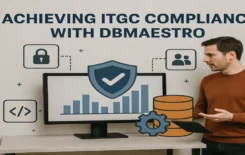Database audit trails allow for accountability, intrusion detection, and problem analysis, which can save your business from a major meltdown. Audits are used to keep a record of system activity, which help in the detection of security violations, performance issues, and application flaws. This is achieved primarily through event-oriented logging and keystroke monitoring, which records the information entered by users and the database’s responds during the user’s session.
The Perks of Database Audit Trails
I have created a list of the four top benefits of implementing database audit trails, as they’re proven to mitigate risk and reduce the workload for the DBA before code goes awry. These “audit records provide information about the operation that was audited, the user performing the operation, and the date and time of the operation.”
1. Accountability
Accountability is one of the most important concepts in a work environment, especially within the DevOps structure. It is through database audit trails that the CIO and DBAs can work together to promote and ensure accountability of database and application developers.
With audit trails, management can keep track of changes from afar, instilling a sense of trust and accountability amongst the programmers.
2. Problem Analysis
The ability to identify, diagnose, and solve problems outside of intrusions is part of the DBA’s daily database change management responsibilities. Database audit trails, through the use of online tools, identify these problems in real-time.
Real-time database auditing is commonly implemented to monitor the status of processes as they are implemented. With online connectivity, analysis techniques remain up-to-date.
System performance logs complement this by noting events like the increase in usage of system resources like file space or modem use. Such events could be nothing, but are sometimes indicative of a breach in security.
3. Intrusion Detection
Through auditing, users are also less likely to breach security or modify data improperly. Database audit trails restrict the use of system resources, granting users access only to specific resources that are relevant to their job. For example, if a user is able to access company records, but the system determines that they are copying or printing more than the average user, their audit trail will make a note of it.
This allows administrators to identify attempts to penetrate a system or network to gain unsanctioned access, which is done through real-time auditing. By examining audit records as they are created, companies can remain aware of any attempts to compromise their databases.
While real-time intrusion detection is mainly aimed at outsiders attempting to gain access within a system, it is also used to detect internal system performance issues, as undetected malicious code is sure to wreak havoc.
In short, intrusion detection can make both programmers and management aware of issues before they truly threaten the data of a company.
4. Event Reconstruction
If a system does experience some kind of problem, the events leading to the glitch can be analyzed and reconstructed. Database risk management is maximized with the review of audit trails to pinpoint how, when, and why the problem occurred.
Today, audit trails are smart enough to understand the difference between operator errors, where the system merely performed as told, and system-created errors, where a piece of code caused the system to malfunction.
Knowing exactly what conditions were created to cause the problem can be extremely useful for avoiding similar issues in the future. Additionally, audit trails can assist in the salvation process through the use of file reconstruction and data recovery.
The Concentrated Value Proposition
Implementing a database audit trail is the most efficient way to enforce and ensure your organization will remain protected from programming mistakes and security breaches. Auditing is a major asset for organizations, as it saves time, money, and reputation.
Do you know what are the best database auditing tools? You might enjoy our next article.






